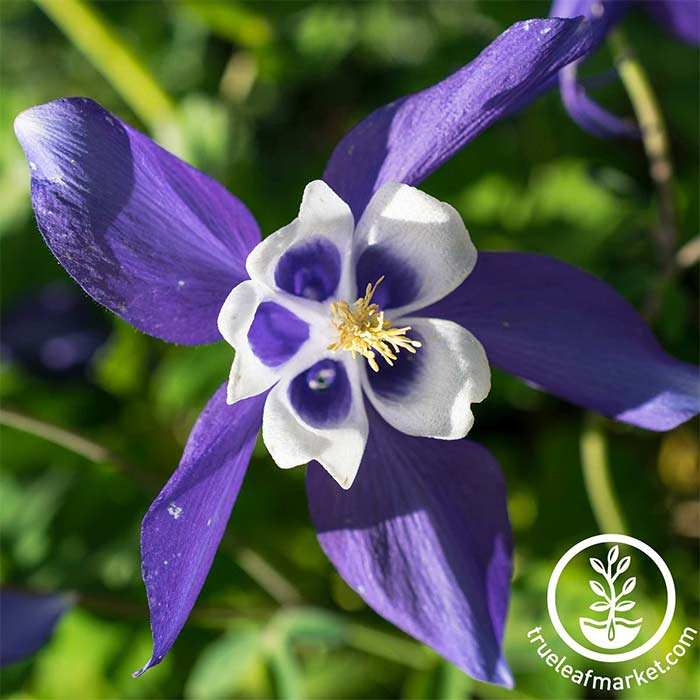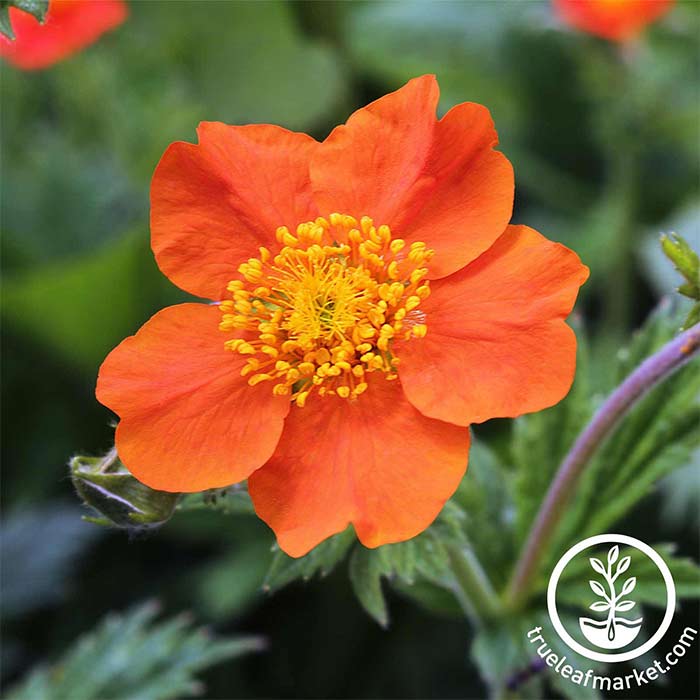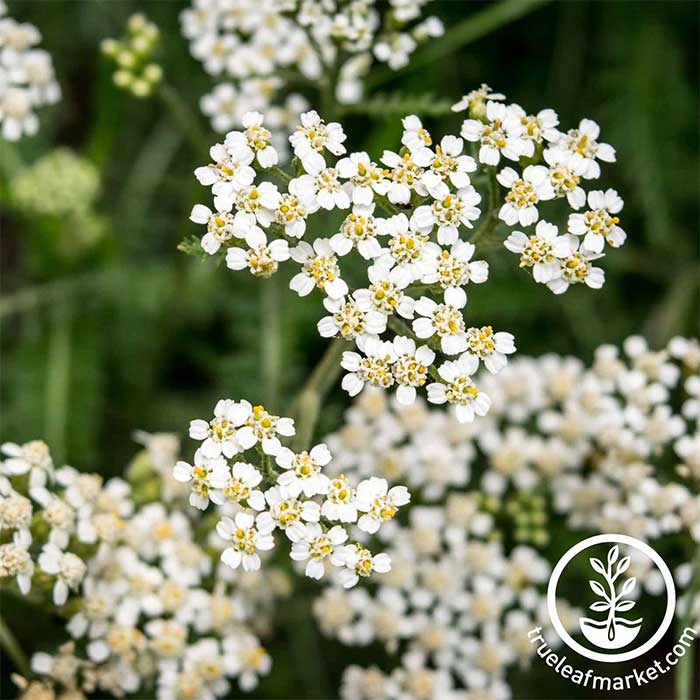
Ashleigh Smith

 |
Written By Lara Wadsworth |
The Rocky Mountains are home to as many as 5000 plant species. Each plays its part in creating a diverse and symbiotic ecosystem. When we cultivate our gardens, we often choose plants simply for their look or popularity. This can lead to monocultures, invasive plants, and decreased habitat for wildlife and insects. This list of 10 native plants can hopefully be a guide for you to increase the biodiversity in your garden while simultaneously welcoming beneficial insects to the area. Beneficial insects are exactly what it sounds like! They are insects that do not harm humans or their habitations but simply spread pollen and target pests such as aphids, slugs, and other pesky, damaging creatures.
Columbine (Aquilegia spp.)
Columbine is a well-loved wonder. These mountain beauties bloom each spring and dazzle us into the summertime. They do well in drought and are simple to grow from seed with a bit of patience. Columbine is known to attract bumblebees, butterflies, and hawk moths to the area. Hawk moths are known for their ability to help control unwanted plant vegetation as caterpillars and for their pollination value as adults. They are not considered pests in the garden but play a critical role in natural ecosystems.
Blue Flax (Linum lewisii)
One of the best self-establishing plants is blue flax. Do you want a truly low-maintenance flower with massive benefits in your Rocky Mountain garden? Blue flax is the ticket. Blooming profusely throughout the spring and early summer, this delicate blue flower attracts pollinators, predatory wasps, and hoverflies. Predatory wasps and hoverflies both target infestations of caterpillars, thrips, harmful beetles, flies, aphids, grasshoppers and crickets. Blue flax will also easily reestablish without becoming invasive. It is truly a one-and-done!
Penstemon (Penstemon spp.)
Also known as Rocky Mountain Beardtongue, this beloved flower is a rockstar in the garden and in bouquets and other decor. Penstemon is a great option for a “low-key” native garden. Many people plant it simply for its beautiful flowers. However, it also excels at attracting pollinators, parasitic wasps, and assassin bugs. Parasitic wasps are fascinating little creatures that lay their eggs inside aphids, thus killing them and using them to further their own population. Despite the scary name, they are not harmful to humans at all!
Gaillardia (Gaillardia aristata)
Commonly called Blanket Flower, this summer-to-fall bloomer has a striking daisy-like display of warm colors. It attracts parasitic wasps and hoverflies. Hoverfly larvae eat thrips and aphids in large quantities to fuel their growing bodies. Don’t miss out on this easy-to-grow flower that can thrive in basically any Rocky Mountain garden!
Lupine (Lupinus perennis)
This predatory insect magnet is also a magnet for the eyes! The unique summer blooms of Lupine have captivated all who see them. The spires of tiny flowers point to the sky and symbolize for many the hope and rejuvenation that mountains bring. In addition, similar to milkweed being the only food source for monarch butterflies, lupine is the only food source for Karner Blue butterflies which are quickly becoming endangered. We need each and every insect species for this grand ecosystem to function; to lose even one of them to conventional gardening would be a heavy blow.
Bee Balm (Monarda fistulosa)
Also called Wild Bergamot, Bee Balm is another critical and beautiful flower known for attracting pollinators and predatory insects. The wonderful summer blooms dazzle the landscape while also attracting native ladybugs. Adult ladybugs eat aphids, but their larvae are voracious generalist predators that also eat thrips, spider mites, and more! Ladybugs are attracted to pollen and bright colors. This plant has them both in full force!
Prairie Smoke (Geum triflorum)
This late spring bloomer is a known hot spot for attracting ground beetles. The term “ground beetle” broadly encompasses a wide range of species. However, they generally target caterpillars, fly maggots, ants, aphids, slugs, small wasps, snails, and more! If you spot a beetle in your garden, try your best to identify it. Some beetles can end up doing more harm than good. However, many species are good friends to have around!
Yarrow (Achillea millefolium)
Yarrow sometimes gets a bad reputation for being invasive. However, in a natural ecosystem, it gets kept in check easily and contributes heavily to the general health of the area. The branching habit of yarrow acts as a haven for a variety of beneficial insects, including ladybugs and lacewing larvae. Green lacewings are generalist predators that eat aphids, spider mites, thrips, and more! In their larval stage, they are ravenous little monsters that can easily clear out an infestation. Don’t miss out on utilizing yarrow in your garden! It even comes in various colors these days; dazzling white, golden yellow, and even peachy pink!
Rocky Mountain Bee Flower (Cleome serrulata)
Sometimes simply called Cleome, Rocky Mountain Bee Flower is exactly what it sounds like: a haven for Rocky Mountain bees! These crucial pollinators are a huge help to our way of life. Without bees, our food chain would be completely halted before too long, leaving us in serious trouble. In the garden, they ensure fruits and vegetables grow properly and give newly formed fruits the best chance at realizing their potential. Bees are attracted to bright colors, pollen, and fragrance. They share host plants with butterflies and ladybugs as well!
Coneflower (Echinacea purpurea)
I would be remiss if I didn’t mention my favorite native flower of all time. The Purple Coneflower is a rockstar in the garden, kitchen, field, mountain, and anywhere! Drought-tolerant and easy to grow from seed, this wonderful flower is hardy and beautiful. Beyond its aesthetic appeal, the coneflower is a magnet for beneficial insects such as bees, butterflies, and pirate bugs. Pirate bugs eat soft-bodied insects and eggs such as aphids, leafhopper nymphs, whiteflies, and more. And you can’t forget the wonderful tea that echinacea leaves can make!
Increasing the beneficial insect habitat in your yard decreases the amount of pest management you need to do each year and throughout the year. Once these delightful plants are established, you will reap the benefits for decades. From the delicate columbine blooms to the nostalgic purple coneflower, they all play their part in creating the perfect environment for plants, animals, insects, and humans to thrive. Do your part this year and plant a greater diversity of plants!
 |
Lara Wadsworth, True Leaf Market Writer |
I am a native of Southwestern Michigan, where I also reside, and I love all things plants! I got a Bachelor's Degree in Horticulture and found the first work-from-home job I could get. Now, I spend my days writing for TLM, playing with my dog, eating delicious food with my husband, and plotting my next landscape or gardening move. I believe everyone should get down and dirty in the soil now and then. Happy Gardening!
About the Author

I'm Ashleigh Smith, a native to Northern Utah. I first gained a love of gardening with my grandmother as I helped her each summer. I decided to make a career of it and have recently graduated with a Bachelor's degree in Horticulture from Brigham Young University - Idaho. My studies have focused on plant production while I also have experience in Nursery & Garden Center Operations.
Our Recommended Picks
Leave a comment
Your email address will not be published. Required fields are marked *
1 comments
Ian
Thank you for this great article!!
Further Reading

How to Choose the Right Tobacco Seed Variety for Your Garden
Selecting the right tobacco seed variety can make or break your growing season. For experienced gardeners, this choice isn’t just about aesthetics—it’s about matching your growing environment and goals with the perfect plant genetics. Whether you’re gr...

Ashleigh Smith
2025-10-294 min read0
Everything You Need to Know About Tobacco Seeds
Growing tobacco seeds is an art form for seasoned home gardeners. Whether you’re intrigued by the plant’s ornamental qualities, want to harvest for fresh processing, are curious about heirloom varieties, or simply love the challenge of nurturing delica...

Ashleigh Smith
2025-10-297 min read0
Mild Climate Winter Gardening Guide for Zones 9 & 10: What to Plant and When
Coming soon!

Ashleigh Smith
2025-10-171 min read0
Harvesting the Incredible Health Benefits of Microgreens
Written By Lara Wadsworth Microgreens are young edible seedlings that are harvested when they are just 1-3 inches tall. These quick-growing plants are emerging as an important food source with numerous health benefits. Their nutrient density can be up ...

Ashleigh Smith
2025-09-306 min read1













